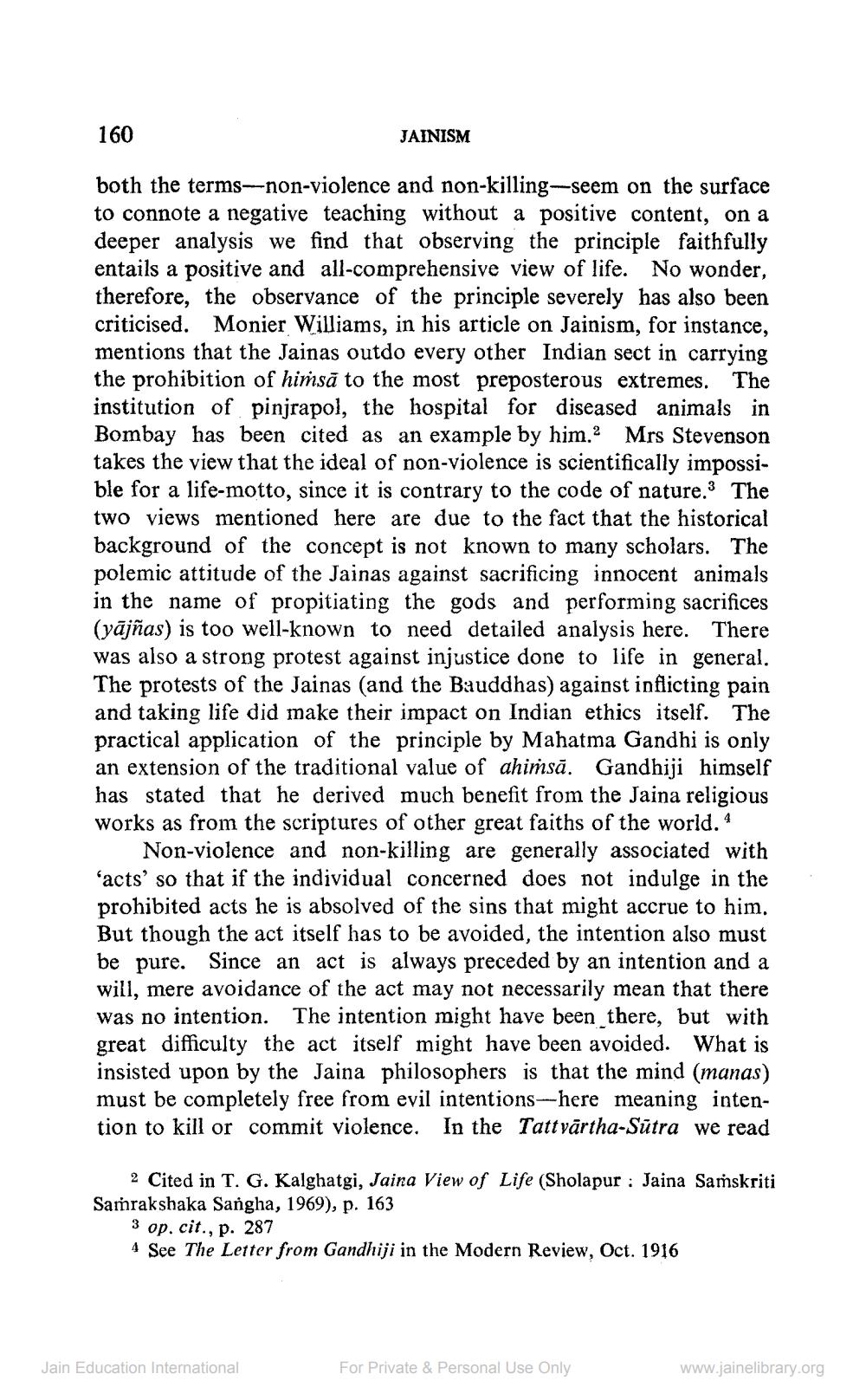________________
160
both the terms-non-violence and non-killing-seem on the surface to connote a negative teaching without a positive content, on a deeper analysis we find that observing the principle faithfully entails a positive and all-comprehensive view of life. No wonder, therefore, the observance of the principle severely has also been criticised. Monier Williams, in his article on Jainism, for instance, mentions that the Jainas outdo every other Indian sect in carrying the prohibition of himsa to the most preposterous extremes. The institution of pinjrapol, the hospital for diseased animals in Bombay has been cited as an example by him.2 Mrs Stevenson takes the view that the ideal of non-violence is scientifically impossible for a life-motto, since it is contrary to the code of nature. The two views mentioned here are due to the fact that the historical background of the concept is not known to many scholars. The polemic attitude of the Jainas against sacrificing innocent animals in the name of propitiating the gods and performing sacrifices (yājñas) is too well-known to need detailed analysis here. There was also a strong protest against injustice done to life in general. The protests of the Jainas (and the Bauddhas) against inflicting pain and taking life did make their impact on Indian ethics itself. The practical application of the principle by Mahatma Gandhi is only an extension of the traditional value of ahimsā. Gandhiji himself has stated that he derived much benefit from the Jaina religious works as from the scriptures of other great faiths of the world. 4
Non-violence and non-killing are generally associated with 'acts' so that if the individual concerned does not indulge in the prohibited acts he is absolved of the sins that might accrue to him. But though the act itself has to be avoided, the intention also must be pure. Since an act is always preceded by an intention and a will, mere avoidance of the act may not necessarily mean that there was no intention. The intention might have been there, but with great difficulty the act itself might have been avoided. What is insisted upon by the Jaina philosophers is that the mind (manas) must be completely free from evil intentions-here meaning intention to kill or commit violence. In the Tattvärtha-Sutra we read
JAINISM
2 Cited in T. G. Kalghatgi, Jaina View of Life (Sholapur Jaina Samskriti Samrakshaka Sangha, 1969), p. 163
3 op. cit., p. 287
4 See The Letter from Gandhiji in the Modern Review, Oct. 1916
Jain Education International
For Private & Personal Use Only
www.jainelibrary.org




